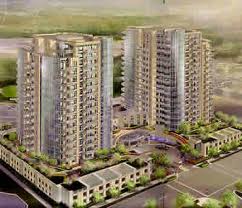Take a drive on the Leverett Connector alongside Route 93, and you’ll notice a curious sight.  There’s a partially-built exit ramp, hanging out from the road; its suddenly halted steel girders and roughened concrete startle you, offend your eye, like the aftermath of an amputation. As if the phantom exit ramp had been brutally excised to prevent a cancer from spreading. Which is true, in a manner of speaking. For this is a ghastly reminder of one of the most ill-conceived highway transit projects never perpetrated—the Inner Belt, which would have sliced through the cities of Somerville and Cambridge to funnel many thousands of cars daily into the City of Boston.
There’s a partially-built exit ramp, hanging out from the road; its suddenly halted steel girders and roughened concrete startle you, offend your eye, like the aftermath of an amputation. As if the phantom exit ramp had been brutally excised to prevent a cancer from spreading. Which is true, in a manner of speaking. For this is a ghastly reminder of one of the most ill-conceived highway transit projects never perpetrated—the Inner Belt, which would have sliced through the cities of Somerville and Cambridge to funnel many thousands of cars daily into the City of Boston.
This amputated exit ramp also serves as a mute tribute to the power of an aroused citizenry. For that highway would have been built 42 years ago, and Somerville and Cambridge would have been split in two, had it not been for the raised voices and continuous resistance of an engaged and outraged local community.
Today, we know the cost to a community’s social fabric when you run an elevated highway through the heart of a city, but back then many of these raised voices were denounced as fighters of progress or NIMBY’s (not-in-my-backyard-ers) or advocates of the status quo. When in fact, they were authentic voices of Cambridge sticking up—and speaking up!—for the city they loved.
Today, there’s a parallel situation arising in Cambridge, and once again the sellers of progress, unstoppable and unsuitable development and unbridled profits are railing against a group of citizens who have risen up to demand due diligence and a steady hand on the helm before we chart a ruinous course for Cambridge from which we will never recover.
I am proud to be a member of the Cambridge Residents Alliance. Proud to stand alongside members of the community who have worked tirelessly over the years to serve Cambridge and its residents. People like Nancy Ryan, who has a long history of community service, Jonathan King, an MIT professor and veteran of many citizen initiatives, Cathy Hoffman, who served on the Cambridge Peace Commission, Bill Cunningham, advocate for public housing tenants, Lee Farris, an activist for affordable housing, Rich Goldberg, a leader of the Area 4 Coalition, Steve Kaiser, Traffic Engineer and outspoken critic of the city’s lax transportation study practices, to mention just a few. These people have no bone to pick with progress or appropriate development. But they will not be silenced, or frightened off, by the size of a developer’s war chest, the shrillness of the arguments and accusations made by pro-development forces, or the vision and machinations of Cambridge’s own city management and Community Development Department.
We have witnessed those forces engage in a focused effort to guide a supposedly objective study of Central Square’s future toward recommendations so drastic they endanger the character and livability of the area they’re ostensibly trying to improve.
More to the point, we have witnessed these studies move ahead without anyone—except members of our alliance—conducting studies or collecting information to project the impacts of these recommendations and other projected developments on the city as a whole. Using the city’s own statistics, we have been able to project a minimum of 18 million additional square footage of development—a virtual tsunami of new offices, residences and labs—about to wash over the city during the next 20 years. Plus a minimum of 50,000 additional car trips daily, and 50,000 additional public transit trips—on subways and buses that today have little if any additional capacity.
As we state on our CambridgeResidentsAlliance.org web site…The Cambridge Residents Alliance represents individuals and neighborhood organizations committed to preserving and promoting a livable, affordable, and diverse Cambridge community.
We believe the innovative and creative character of the Cambridge economy derives in part from the multi-cultural, cooperative and inclusive social fabric of our city, which needs to be protected, not dissolved.
We support preserving, enhancing and expanding our public and affordable housing.
We believe the choking up of travel on streets, buses and trains through over-development is not in the interest of the community.
We value sunlight, sky views, and our very limited open community spaces and parks, and seek to limit shadowed canyon-like streets from over-size buildings.
We believe traffic has to be limited to levels such that children can go to and from school and after school activities safely.
We oppose the construction of high-rise buildings designed primarily to make large profits for developers.
We need continuing comprehensive urban planning efforts to improve the quality of life and work for Cambridge residents.
And lastly, like those activists in the 1960’s & 1970’s, we will not be silenced by those who propose development at all costs, who will not learn from the lessons or the amputated highway ramps of the past. Cambridge is a city of people from diverse backgrounds, economic levels, ethnicities and visions. Rather than put any of those parties at risk by serving the vision of taxes-hungry city managers or profit-hungry developers we’re calling for an unbiased citywide study of development and growth issues from which we can fashion a sensible approach to creating a future we all can share.



